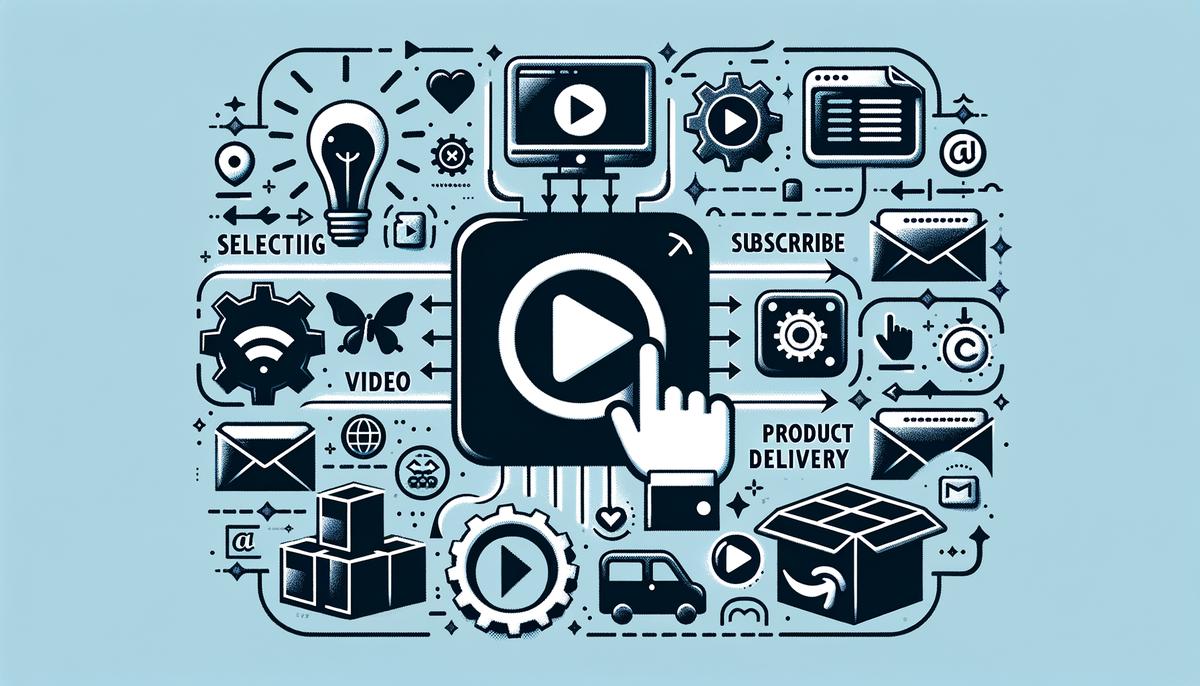Amazon Prime and Prime Video offer a world of convenience and entertainment, tailored to fit the diverse needs of their members. This article explores the multifaceted nature of these services, from the fast shipping perks of Amazon Prime to the vast content library of Prime Video. Understanding how these services enhance daily life and manage subscriptions can empower users to make informed decisions that align with their lifestyle and preferences.
Overview of Amazon Prime and Prime Video
Amazon Prime presents itself as more than just a basic subscription; it’s a comprehensive package designed to cater to a variety of customer needs, fundamentally enhancing the online shopping experience. First and foremost, at its heart, Amazon Prime is a membership program. For a fee, members enjoy several benefits, the most notable being free, expedited shipping on a multitude of items across Amazon’s vast inventory. This speedy shipping service, often delivering items in two days or less, is a cornerstone of the Prime membership, vastly appealing for the convenience it offers.
Yet, Amazon Prime’s benefits extend well beyond simple shipping perks. Members have access to exclusive deals and discounts not available to regular Amazon customers. Especially during events like Prime Day, an annual sales event that’s exclusive to Prime members, the deals presented are particularly attractive, offering significant savings across a wide range of products.
Equally important is Prime Video, a segment of Amazon Prime that ventures into the world of digital streaming. Prime Video is an on-demand service that allows members to stream a wide array of movies, television shows, documentaries, and exclusive Amazon Originals. This means members have the luxury of accessing a rich catalogue of content whenever they wish, contributing substantially to the value of a Prime membership. The diversity of available content caters to varied tastes and preferences, making Prime Video a formidable competitor in the streaming service arena.
As part of its streaming portfolio, Amazon Prime also includes features like Amazon Channels. This allows members to subscribe to other premium channels and streaming services through Amazon, often streamlining payments and access through the Amazon platform. This bundling capability further enhances the attractiveness of Prime as it aggregates content sources into a single, easily navigable service.
Moreover, Prime Music complements the multimedia aspect of Amazon Prime by offering access to a vast library of songs and albums. Members can stream their favorite tracks, discover new music based on their listening habits, and even download songs for offline listening, all without additional fees.
To enrich the shopping experience further, Prime members benefit from Amazon Fresh and Prime Pantry, services that make grocery shopping and household item purchases more convenient. With expedited delivery options, members can order fresh produce, daily essentials, and more, directly to their doorstep, embodying the essence of convenience that Amazon strives for.
Lastly, Prime Reading opens up a digital library for members including books, magazines, and more—providing a substantial value for avid readers. Like Prime Video, this service allows unlimited access to its content as part of the membership, adding another layer to the multifaceted Amazon Prime offering.
In conclusion, Amazon Prime is not merely a service but an ecosystem designed to integrate deeply with the lives of its members. From providing unparalleled shipping speeds to offering a rich suite of entertainment and lifestyle benefits like Prime Video, music streaming, and even groceries, Amazon Prime positions itself as an indispensable part of daily life for its members.

Subscription Models and Pricing
Understanding the pricing structure of Amazon Prime and its digital streaming segment, Prime Video, is essential for consumers weighing up the benefits of the service against its cost. Amazon Prime operates on a subscription basis, offering membership with a choice of payment plans to suit different user preferences.
For those considering diving into the depths of Amazon’s expansive offerings, pricing structure knowledge is key. Amazon Prime’s membership can be subscribed to on an annual or monthly basis. Annually, the membership cost stands at $139, reflecting a choice for those committed to leveraging Amazon’s full suite of benefits over the long term. This option, while demanding a higher upfront payment, translates into savings compared to the monthly alternative. For consumers seeking flexibility or those hesitant to commit annually, the monthly subscription offers a viable path at $14.99 per month. This option allows for easier budgeting and the freedom to cancel at any time, though this convenience comes with a higher cumulative annual cost.
Prime Video, Amazon’s standalone streaming service offering a plethora of movies, TV shows, and exclusive content, avails itself to non-Prime members at a separate price. For those interested in just the entertainment slice of Amazon’s ecosystem, without the commitment to full Prime membership, Prime Video can be accessed for $8.99 per month. This tier provides an affordable gateway into Amazon’s vast content library, tailored to entertainment seekers not yet in need of the comprehensive benefits package Prime membership entails.
Additionally, it’s worth noting that students can enjoy the perks of Prime at a significantly reduced rate through Amazon Prime Student. Offering the same array of benefits at half the price, the Prime Student membership stands at $69 annually, presenting an economical alternative for individuals pursuing education. A six-month free trial further sweetens the deal, showcasing Amazon’s strategy to integrate itself into the routine of young consumers early on.
In contrast, individuals receiving qualifying government assistance can subscribe to Amazon Prime at a discounted rate through Prime Access, setting a monthly fee at around $6.99. This initiative expands Amazon Prime’s reach, extending its benefits to a broader audience and reinforcing the company’s commitment to accessibility.
In summary, Amazon Prime’s and Prime Video’s pricing strategies are designed with flexibility in mind, catering to a broad spectrum of needs and financial situations. From the full array of Prime benefits to the standalone streaming service, Amazon provides multiple entry points for consumers wishing to engage with its ecosystem. This tiered pricing model not only underscores Amazon’s understanding of diverse consumer demographics but also showcases its aspiration to make its services attainable and appealing across the board.

Common Reasons for Unexpected Charges
Understanding the separate charges for Amazon Prime and Prime Video can be puzzling at first glance, but it’s quite straightforward once broken down. Many consumers find themselves scratching their heads, wondering why their bill reflects charges for both Amazon Prime and Prime Video, despite Prime Video supposedly being a part of Amazon Prime. The confusion typically stems from the way these services are structured and offered to the public.
Firstly, it’s essential to point out that Amazon Prime is the broader membership program that envelopes a variety of services, including Prime Video. Think of Prime Video as one piece of the Amazon Prime puzzle, contributing to the overall value of the Prime membership. However, recognizing that not every consumer is interested in the full suite of Prime benefits, Amazon has made Prime Video available as a standalone service.
The stand-alone option of Prime Video caters specifically to users whose primary interest is in streaming movies, TV shows, and Amazon Originals. This offering is particularly appealing to individuals who don’t necessarily shop online frequently or take advantage of the myriad of other perks associated with Amazon Prime. By separating Prime Video, Amazon extends its reach to a broader audience, ensuring that even those not subscribed to the full Prime service can access its extensive digital content library.
A mistake some make is assuming that since they have an Amazon Prime membership, they’ve inadvertently signed up for an additional, unnecessary Prime Video subscription. In reality, these individuals may have initiated a separate Prime Video subscription before becoming full Prime members, recognizing too late that Prime already includes Prime Video.
The reverse can also be true. Some sign up for Amazon Prime not realizing they’re also getting access to the Prime Video library, leading to a separate and unnecessary subscription to the standalone Prime Video service. This redundancy unfortunately adds an unnecessary cost to their monthly expenses.
Amazon’s customer service is designed to help sort through such confusions. They can assist in merging subscriptions and ensuring that customers are only billed for their desired services. Communication with Amazon’s support team can resolve billing concerns and streamline subscriptions to meet individual needs and preferences.
Navigating the billing nuances between Amazon Prime and Prime Video primarily requires an understanding of how both offerings interconnect and distinguish from each other. Subscribers have the flexibility to tailor their subscriptions based on their entertainment consumption and shopping habits, ensuring they gain the most value from what Amazon has to offer.

Analyzing the Value Proposition
With the broad spectrum of benefits available under Amazon Prime, many users ponder the practicality of maintaining separate subscriptions for both Amazon Prime and Prime Video, especially when analyzing the convenience and financial implications of such decisions. The crux of this deliberation often centers on the unique value each subscription offers and how they collectively contribute to enhancing the user’s experience.
Amazon Prime stands as a multifaceted membership, delivering not just a wide array of entertainment options but also several lifestyle enhancements that significantly ease daily life. From speedy delivery services promising an altogether hassle-free shopping experience to exclusive deals designed to provide real financial value to the subscribers, Amazon Prime positions itself as more than just an entertainment service. The inclusion of Prime Video within this broader membership amplifies the allure of Amazon Prime, offering a compelling blend of convenience and content diversity to its members.
On the other hand, Prime Video’s standalone service appeals mainly to those with a keen interest in entertainment, unbothered by the spectrum of shopping and lifestyle perks bundled with Amazon Prime. This narrow focus allows individuals to access a wide range of movies, TV shows, and Amazon Originals without investing in the comprehensive benefits of Amazon Prime, proposing a suitable option for users whose priorities lie solely in content consumption.
However, the choice between maintaining both subscriptions becomes intriguing when considering the overlaps and unique advantages they offer. Subscribers must weigh the incremental value Amazon Prime presents over Prime Video, especially regarding the non-entertainment benefits. The financial aspect plays a crucial role; with Amazon Prime embracing a variety of services within its cost, it may present a more cost-effective solution for individuals looking to maximize their benefits across entertainment and lifestyle needs.
Moreover, the decision intertwines with personal lifestyle preferences and consumption patterns. For those engaged in frequent online shopping or taking advantage of the myriad of non-entertainment related benefits, Amazon Prime emerges as a convenient aggregator of services that cater to both leisure and lifestyle needs, potentially rendering a separate Prime Video subscription redundant in terms of value.
Ultimately, the viability of subscribing to both Amazon Prime and Prime Video hinges on personal preferences, consumption habits, and the perceived value of the bundled services. Subscribers might find Amazon Prime sufficiently inclusive, with its broad array of perks spanning beyond digital content, representing a holistic approach to blending entertainment with daily conveniences. In contrast, viewers with a singular focus on video content might lean towards standalone Prime Video subscription, prioritizing content diversity over the integrative experience offered by Amazon Prime. Thus, the subjective evaluation of needs and preferences dictates the appropriateness of maintaining either one or both subscriptions.

Navigating Subscription Management
Technology evolves and with it, our interactions and subscriptions adapt as well. This includes how we manage or decide to cancel our Amazon Prime and Prime Video subscriptions. Understanding the process is straightforward, but knowing the steps can make the decision easier, whether it’s for cost-saving purposes or changing entertainment needs.
Firstly, navigating to your Amazon account settings is the starting line for any subscription adjustment. Here, you’ll find a hub referred to as “Manage Your Prime Membership,” which serves as the control room for your Amazon Prime subscription. This section is crucial for making any changes. If you’re looking to adjust your Prime setup, you begin here.
Now, suppose you’re leaning towards cancellation. In that case, clicking “End Membership” triggers the process. But Amazon, keen on retaining its customers, may offer reminders of the benefits you’re choosing to leave behind or suggest pausing your membership instead. Pausing might be a middle ground worth considering if you’re on the fence about leaving Prime entirely.
For Prime Video, the journey is slightly different. Accessing the “Accounts & Settings” within Prime Video opens the door to subscription management. The interface guides you through your subscription details, where an option to cancel is available. Selecting “End Subscription” will confirm your decision, though, similar to Prime, a series of prompts highlighting the benefits you’re opting out of may appear.
Before making any final decisions, it’s wise to review your utilization of Prime benefits. Are you ordering enough to justify the free shipping? Do you frequently stream on Prime Video? Evaluating usage can help solidify whether maintaining these subscriptions aligns with your needs.
Conversely, for those who might be reconsidering or adjusting their membership type, Amazon accommodates transitions between different plans. Whether moving from monthly to annual for cost efficiency or vice versa for flexibility, the options are accessible within the same management sections outlined previously.
It’s also worthwhile to note that any ongoing Prime or Prime Video benefits remain active until the end of the current billing period, even after cancellation. This ensures that you won’t feel shortchanged, giving a grace period to enjoy the benefits for the duration already paid for.
Lastly, addressing membership concerns or specific issues doesn’t necessarily have to result in cancellation. Amazon’s customer service is geared towards resolving problems or queries related to your subscriptions, which might offer an alternative solution.
Managing or canceling your Amazon Prime and/or Prime Video subscriptions is designed with flexibility in mind, accommodating various consumer conditions and changing preferences. By following the steps laid out in your account settings, you can tailor your subscription to best fit your lifestyle and entertainment needs at any given moment.

Consumer Rights and Protections
Dealing with unexpected charges and understanding your rights regarding subscription cancellations can become a crucial aspect of navigating online services today. With an increasing number of services requiring monthly or yearly subscriptions, it’s pertinent to grasp how one can address unforeseen expenses and handle the cancellation process.
When you encounter an unexpected charge related to any subscription, including Amazon Prime, the first step is seeking clarification. Often, these charges stem from a forgotten renewal or an unrecognized service tied to your account. Each company, including Amazon, has a procedure in place to review and process these queries. It is typically recommended to directly contact customer service, where representatives can outline specific transaction details and offer potential solutions.
Your rights concerning subscription cancellations are fairly straightforward but important to understand. For most online subscription services, you can cancel at any time. However, the method of cancellation could vary from one service to another. Generally, services allow users to cancel through their account settings on the company’s website or app. Upon selecting to end a subscription, it’s crucial to keep in mind that while immediate cancellation is often processed, you may continue to have access to the service until the end of the current billing period. This aspect serves as a double-edged sword: you won’t reclaim any portion of the fee already paid for the ongoing cycle, but you retain the service until it lapses.
An aspect occasionally overlooked when cancelling subscriptions involves auto-renewal settings. Many services automatically renew subscriptions at the end of each period, which could lead to unexpected charges if not monitored. Ensuring these settings are adjusted—or at least being aware of the auto-renewal dates—can prevent surprising charges. If faced with an unintended renewal, contacting customer service promptly is advisable, as many companies may offer a grace period for refunds or cancellation post-renewal.
Another important right covers your ability to dispute charges perceived as incorrect or unjust. This can usually be done through the service provider or directly with your bank or credit card issuer. For instance, if a cancellation attempt resulted in continuing charges due to a technical issue, evidence of your attempt can be beneficial in disputing the charge.
In summary, managing subscriptions flexibly is rooted in understanding your rights and the procedures for addressing unexpected charges and cancellations. Directly engaging with customer services plays a central role in this process, offering a path to rectify billing inaccuracies and tailor subscription services to better fit changing preferences or circumstances. Remember, the control over your subscriptions largely rests in your hands; managing them proactively is key to avoiding unforeseen costs and ensuring your digital service agreements align with your current needs and expectations.

Through a detailed examination of Amazon Prime and Prime Video, it’s clear that these services are more than just about shopping or watching shows; they represent a comprehensive approach to meeting a wide range of consumer needs. Whether it’s enjoying faster delivery times, accessing exclusive content, or managing subscriptions efficiently, Amazon has created an ecosystem designed to integrate seamlessly into everyday life. By making informed choices about these services, users can optimize their experience to match their personal consumption habits and preferences.
Writio: AI content writer for websites. This page was written by Writio!
Leave a Reply